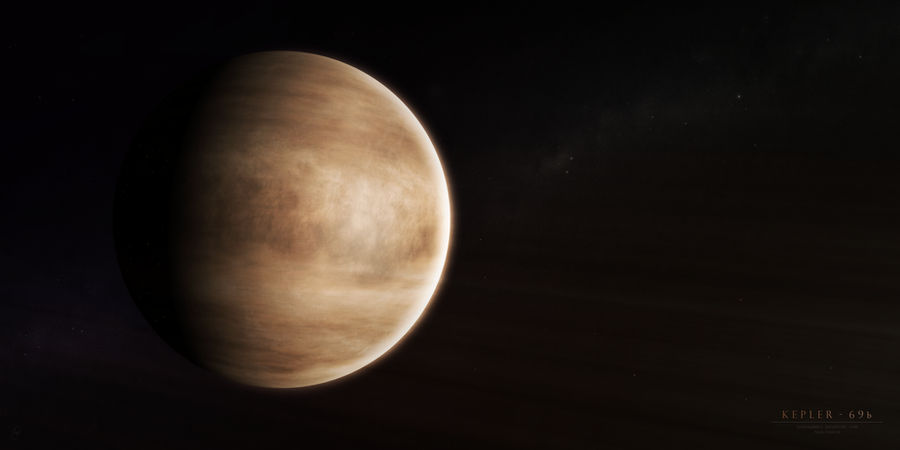ShopDreamUp AI ArtDreamUp
Deviation Actions
Description
_______________________________________________________________________________________
hello!
so enjoy the image!
________________________________________________________________________________________
Kepler - 69b
Description
kepler - 69b is an exoplanet, 2,700 ly away from earth orbiting the sun-like star kepler - 69, in the constellation of cygnus the swan. it was dicovered in april 2013 by the kelper spacecraft which detects planets using the transit method. the planet is part of a 2 planet system where the planet itself, is likely to be a super earth or mini-neptune type world orbiting very close in to the star. the planet is more likely to favour a mini-neptune type world and so would be composed mainly of volatiles such as hydrogen and helium. this means that the planet's density would be closer to that of neptune, but due to its size, the planet would still have a high proportion of rock to volatiles and so would have a density higher than that of neptune's.
assuming a density the same as earth's of 5.515 g/cm³, the planet would have a mass equal to 11.24 earth masses.
assuming a density the same as neptune's of 1.638 g/cm³, the planet would have a mass equal to 3.34 earth masses.
the planet's density is likely to lie between that of neptune's and earth's and so it's mass is likely to lie between 3.34 and 11.24 earth masses.
if the planet has a density closer to that of earth's, the planet may be a 'super-venus', or simply put, a larger version of the planet venus in our solar system.
the planet orbits the star every 13.7 earth days at a distance of 0.094 au. because of its proximity to the star, the planet is most likely tidally locked and so, presents the same face to the star throughout the planet's orbit. this means that one side of the planet would have an eternal day while the other side would have an eternal night. this would create a hot spot on the planet's day side which will force the atmosphere to the nightside and generate ferocious winds in doing so. also, because of the planet's proximity to the star, the planet will be very hot with an average temperture likely to be around 1000°C, hot enough to melt rock. this high temperature will also heat up the planet's atmosphere and give the planet a 'puffy' appearance. this would also cause the planet to appear to have a higher density and mass, where in fact, both the planet's density and mass would be lower than what it appears to be.
the planet should not have moons simply because of 2 reasons:
- the planet does not rotate and so, any moons orbiting the planet would experience orbital decay and crash into the planet due to tidal deceleration.
- the planet orbits too close to the star and so the star's immense gravity would disrupt the orbit of any moon around the planet and cause that moon to crash or be flung away from the planet.
_______________________________________________________________________________________
This Artwork is © 2013 Alpha-Element. ALL RIGHTS RESERVED.
Image size
8000x4000px 19.55 MB
Comments17
Join the community to add your comment. Already a deviant? Log In
thats looks like venus




































